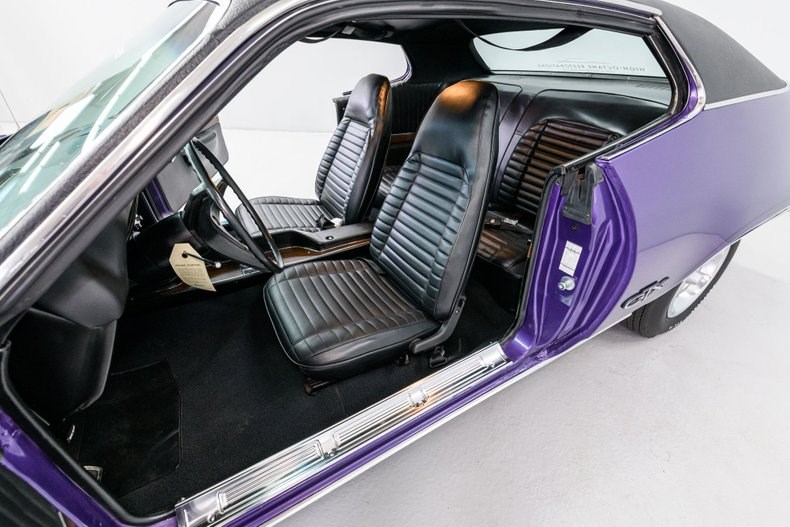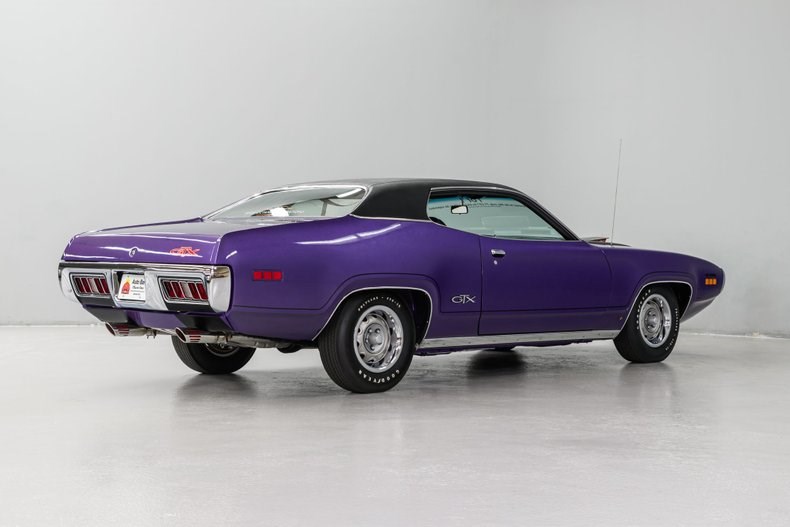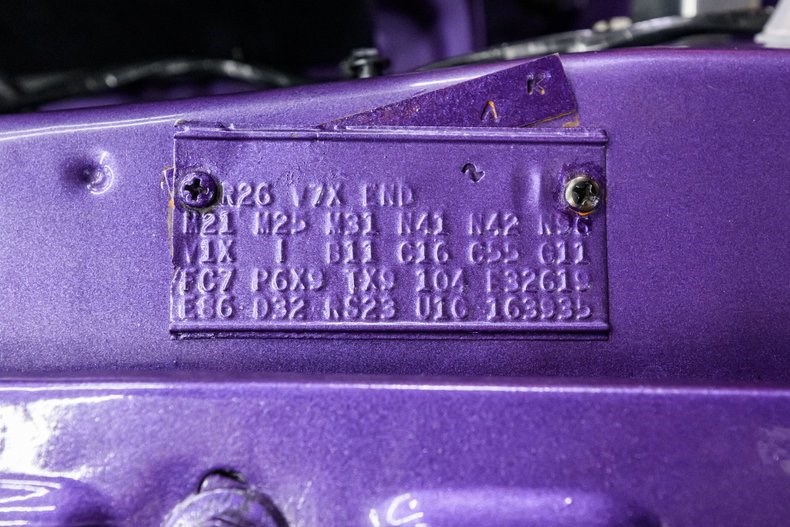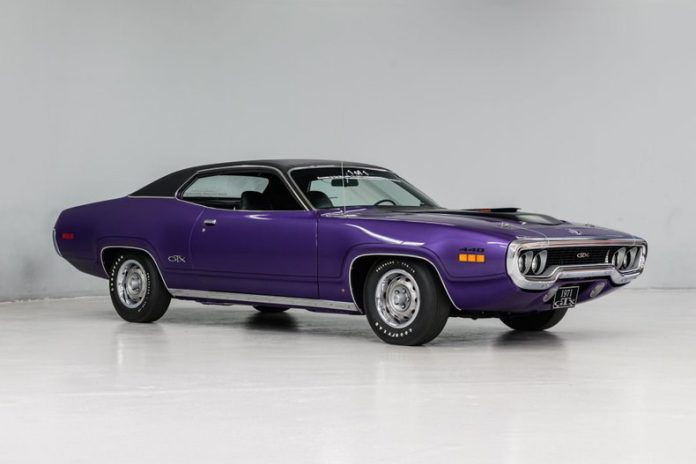The GTX was Plymouth’s foray into the muscle car wars after peddling boring-sounding Belvedere and Satellite models with 383s and 426s. The GTX was notable for having a standard 375-horsepower 440 Super Commando, which was bigger than the competition’s engines and also put out more horsepower than all but the most powerful options available at General Motors and Ford Motor Company. Nineteen seventy-one was the final year for the GTX model, and a fantastic example of such is currently being auctioned on AutoHunter now through February 28, 2023.

The great thing about the GTX was that if the 440 wasn’t enough, Plymouth had the 426 Hemi in its back pocket to scatter the wanna-bes and show who was boss. (In fact, the GTX was called “The Boss” in early period advertising.) Yet a funny thing happened in 1968: Plymouth introduced the Road Runner and completely shook up the market. Yes, the GTX was faster out of the box than the 383 Road Runner, but the market was demanding a price point that was more friendly to its wallet. Plymouth never offered the 440 Super Commando in the Road Runner, avoiding cannibalization within the brand, but the Road Runner’s image and appeal was so strong that GTX sales never managed to compete toe-to-toe with the Pontiac GTO, the sales and image leader until 1969 when the Road Runner (and Chevelle SS 396) became the one to beat.
Click here to view the listing on AutoHunter

For 1971, the Plymouth B-body was redesigned. Of special note was how Plymouth spun off the four-door (sedan) and two-door (coupe) models from each other and how they were designed differently. Designer John Herlitz was given the task of handling the new Plymouth coupe. It was determined the sedan and coupe would have different wheelbases (117 and 115 inches, respectively) to “optimize the respective interior package and afford the Design Office the flexibility to style the cars to market requirements,” according to Mopar expert John Sloan.

The Belvedere name was ditched, with the Satellite becoming the base model. Next in line for the coupes was the Road Runner, then the Satellite Sebring. At the top was the Satellite Sebring-Plus and the GTX. Said Herlitz, “I wanted the body surfaces to have more homogeneity in order to focus the eye on the wheel and wheel cutouts. The body of the car was shaped to emphasize the beauty of the wheels. This was accomplished by flowing the fender shape from plan view (looking down from above) and side view to the wheel cutouts. The resulting wheel flares were tied to the ‘bone-line’ (lower sill area) of the car and emphasized by the single lower character line. The ’71 was as close to state of the art as the technology of the time would allow. I believed it was the answer to what Chrysler was plagued with: linear design. The sculptured shapes and forms brought out the aesthetic value of the sheet metal and made it an integral part of the visual presentation.”


The GTX’s standard 440 Super Commando lost five horsepower (as did the 440 6-bbl.), but otherwise it was full charge ahead like before, albeit with a cutting new figure that made GM’s rehashes look old hat in comparison. Other GTX standard equipment included the trusty TorqueFlite automatic, bucket seats with integral head restraints, heavy-duty suspension, drum brakes, Rallye instrument cluster with woodgrain trim, door panels with woodgrain trim and arm rests, three-spoke steering wheel, performance hood, black grille, bright exhaust tips, special taillight trim and longitudinal side stripes. Notable optional features included transverse hood and fender stripes, rear bumper and valence stripes, urethane body-colored bumpers, Air Grabber ram air induction and backlite louvers, among others.

The 1971 Plymouth GTX presented here is a fine example of the 2,942 built. Originally ordered by a serviceman overseas and picked up domestically, this GTX features the N96 Air Grabber, C16 console with Slap-Stik shifter, AM radio with stereo cassette plus aftermarket FM converter, V7X black longitudinal stripes, M75 rear stripes (added), V1X black vinyl top, G11 tinted glass, W21 15-inch Rallye road wheels wrapped in Goodyear Polyglas F70-15 tires (both added) and FC7 In-Violet metallic paint. Currently owned by former NASCAR driver and Fox NASCAR analyst Ricky Craven, this GTX was rotisserie-restored by High-Octane Restorations, who used properly date-coded components when possible and added details like inspection marks and paint dabs. The standard 3.23 gears was also upgraded to rebuilt D91 Sure-Grip limited-slip status. Mileage reportedly was 30,000 before the odometer was reset during restoration.

For 1972-74, any Road Runner ordered with the 440 Super Commando (a first for the model, aside of the Superbird) received GTX badges as a nod to the Boss, but the 1971 was the latest and greatest. With the purple paint and Air Grabber, there’s not much else that one needs to make the scene at your local cruise. So that you don’t miss the opportunity on owning this 1971 Plymouth GTX, be sure to add it to your watch list now because it’s not every day you find a GTX built for export for a soldier overseas. Thank you for your service, Sir!
Click here to view the listing on AutoHunter







Let me bid on this and more MOPARS
Perfect color combo.